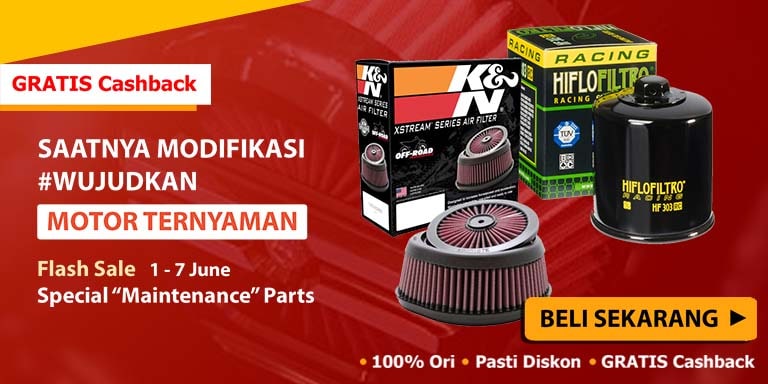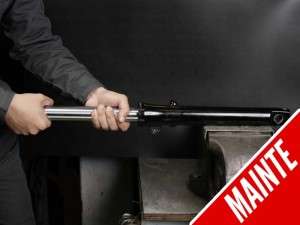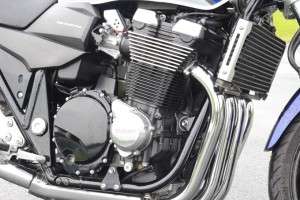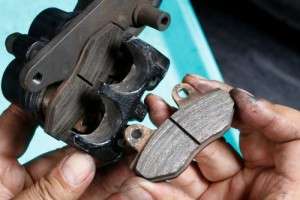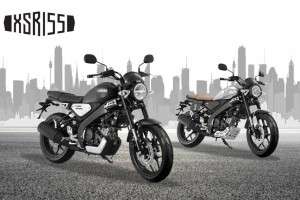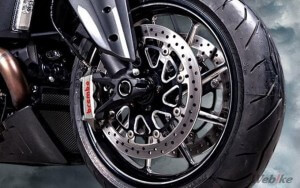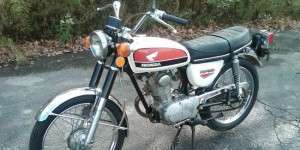The Super Cub Series Meets Local Needs All Over the World
- 09/05/2018
594 views

Between the latitudes of 80° North and 60° South there are nearly 200 countries on our planet, and while we can’t be sure that Super Cubs are being ridden in every one of them, they are certainly on sale in Alaska, Canada, and Sweden in the north, and in Argentina and South Africa in the south. People can be seen riding Super Cubs in countries throughout the world.
Honda Overseas Production Began in Belgium
Honda built its first overseas factory and commenced European manufacturing operations in Belgium in 1963, and the C100 Super Cub was the first motorcycle to be assembled at this new Belgian factory. At the time, small motorcycles, notably pedal-equipped mopeds, were hugely popular all over Europe. The Super Cub, being only slightly larger than these mopeds, didn’t really stand out.
In response, the Belgian factory took the bold step of developing and manufacturing the C310 Moped based on the C240 Port Cub, and equipping it with pedals. This move was part of Honda’s philosophy of providing mobility to benefit the lives of the local populace in every location.
1963C310
After considerable trial and effort, Honda Belgium was established in 1962 as the first local production facility ever opened by a Japanese motorcycle manufacturer in the European Economic Community (EEC — predecessor to the European Union (EU)). Apart from the engines and a few parts, most components were sourced locally for knockdown production. As mopeds (motorbikes of 50cc or less in displacement equipped with bicycle-style pedals) made up 80% of the motorcycles sold in Europe at the time, the Port Cub was used as the base model for development of the C310 moped model. As can be seen by the location of the fuel tank above the leg shields, the new machine’s layout, design, and accessories were kept as simple as possible, closely conforming with European preferences. The C310’s 3-speed transmission featured a centrifugal clutch and was operated by a hand-changer mounted on the left handlebar grip. The rear brake lever was also located on the handlebar, just like a bicycle.
Cubs Developed to Fit the National Identity of Brazil
From the mid-1990s, the Super Cub became essential to the mobility of ordinary people in the giant South American nation of Brazil. By the mid-1990s, Brazil had overcome the flagging economy and runaway inflation of the 1980s to set a new course for economic development. However, its public transportation infrastructure was still severely underdeveloped. People needed convenient, low-priced, and dependable modes of transportation, but nothing like it was available.
The first Super Cubs to be sold in Brazil were 100cc models imported from Thailand, however efforts to sell them were unsuccessful. A careful investigation found that while the usability of the bikes was well-liked, their overall appearance was considered old-fashioned and not at all what people wanted. Users also wanted to keep their possessions out of sight while riding the bikes, due to the constant threat of theft.
Honda Brazil took the lead in responding to these findings by developing the Biz. This name incorporated the meaning of being ‘for the sake of Brazil.’ Clearly conscious of the fact that women would be its main users, this modified Super Cub featured a sleek and stylish silhouette. It also boasted a secure space under the seat that was designed to be big enough to hold a helmet. Needless to say, this combination of attractive styling and a secure place to hold one’s possessions when out and about made the Biz a highly popular bestseller.
1998C100 Biz
Established in 1977, Moto Honda Da Amazonia has produced such Honda motorcycle models as the long-selling CG125. In 1998, it released its own original model, the C100 Biz, a Super Cub-based scooter powered by a 100cc HA07E engine with a 4-speed transmission and shrouded in elegantly styled bodywork. The Biz’s most attractive features included the use of different sized tires for the front (60/100-17) and rear (80/100-14), something unusual even for the Super Cub series, and a carrying space under the seat that was able to hold up to 10 kilograms or a helmet. The Biz could be considered a hybrid of the Super Cub and contemporary scooters, and rolled on wire-spoke wheels, though a version equipped with cast aluminum wheels was also available and called the Plus.
Australia Introduces a Special Model for Postal Delivery
In some countries, state-run public institutions have adopted the Super Cub to carry out their operations. Australia Post, Australia’s government-run postal service, is well known for using Super Cubs to deliver the mail.
For many years, Australia Post used a version of the CT110 Hunter Cub as its dedicated mail delivery model, but currently it uses a specially developed model based on the C110 Super Cub. Outside of Australia, New Zealand and several other countries in Oceania and the southern hemisphere also use Cubs for postal delivery work.
Several countries, including Australia, also used the Hunter Cub for farm management and personal transportation. The Super Cub has come to be well liked in Oceania for providing practical on-the-job mobility.
2005 CT110 Post Office
While originally used as a leisure bike in North America, the CT110 Hunter Cub is best known in Oceania as an agricultural bike, and has served as the base for the mail delivery bikes used by Australia Post, Australia’s government-run postal service. For postal work, the ‘Postie Bike’ was equipped with large carrying pouches front and rear, or sidebags and a rear case, as shown in the photo. The Oceania-version CT110 was usually equipped with a full-coverage chain case, but the postal model used an exposed chain cover, like the North American models. Other visible differences include the separate speedometer module mounted high above the headlight case, crash bars surrounding the engine, and a smaller taillight. However, its main differences include a 12V electrical system and a 4-speed transmission without the Hunter Cub’s dual-range subtransmission. The bike’s IRC tires are genuine 3R types instead of FB3, which while being the same size have a different block pattern. Since 2013, the CT110 Postie Bikes have been gradually replaced by the newer push-button electric start NBC110.
Honda’s High Quality Creates a Broad Fan Base in China
The privatization of China’s state-run industries, as well as its diversified production of industrial products started out gradually from the 1980s. Beginning in 1981, Honda has provided technical assistance to Jialing Industrial, giving Honda an early start in building relationships with its customers in China.
From the early 1990s, Honda provided manufacturing technology for a version of the Super Cub that was powered by a 100cc engine. The next step came in 2002 with the production and release of the Wave 100 by Sundiro Honda Motorcycle Co., Ltd., a joint venture between Honda and a local Chinese company. The Wave 100 soon became a bestselling model.
Later, a carburetor heater and other technological innovations were adapted for use in China’s cold northern regions. The Wave became an especially popular form of daily transportation for people in rural areas. Users liked it for its solid durability, easy maintenance and simple operation, especially women and older people in families where the men have left the house for long stretches of work in the cities.
2004 Wave
Honda’s Sundiro Honda Motorcycle Co., Ltd. joint venture began producing Super Cubs in China in 2002, which is relatively recent compared to Honda’s involvement in the countries of the ASEAN region. This model, called the Wave, was not only sold domestically, it was also exported to other countries outside China. Just like its ASEAN namesake, the Wave features a sleek and stylish form and is powered by a 100cc engine equipped with a 4-speed transmission. Its front turn indicators are built into the upper leg shields, and the bike’s speedometer also features a gear position indicator. The Wave lineup includes models fitted with cast aluminum wheels, as shown in the photo, as well as wire spoke wheels.
Original Source[ HONDA World ]











![speedtriple 150x112 - [New Vehicle] TRIUMPH has Released Fully Model Changed 2016 ”SPEED TRIPLE S” and ”SPEED TRIPLE R”.](https://gc-img.webike.net/@wid-news/wp-content/uploads/2016/02/speedtriple-150x112.jpg)



